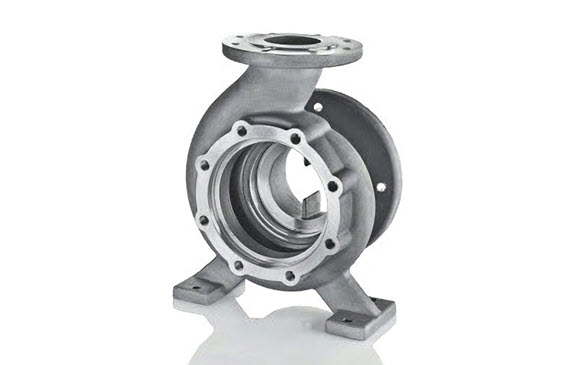How to Cast Pump Housing?
Casting a pump housing is a complex process that involves shaping molten metal into the desired pump housing form. This process is typically used for manufacturing pump housings made from metals such as cast iron, stainless steel, or aluminum. Here's an overview of the key steps involved in casting a pump housing:
1. Design and Pattern Creation
Pump Housing Design: The process begins with the design of the pump housing, which includes determining the exact dimensions, wall thickness, and structural details. This is typically done using CAD (Computer-Aided Design) software.
Pattern Creation: A pattern is created based on the design. The pattern is a physical model of the pump housing, usually made from materials like wood, plastic, or metal. It is used to create the mold for casting.
Core Design: If the pump housing has internal cavities (for channels or flow paths), cores are designed and added to the mold. Cores are made from materials like sand and are inserted into the mold to form internal shapes.
2. Mold Preparation
Sand Casting: The most common method for casting pump housings is sand casting. In this process, a mold is created using sand, which is packed around the pattern of the pump housing.
Cope and Drag: The mold typically consists of two parts, the cope (top half) and the drag (bottom half). The pattern is placed between these halves, and sand is compacted around it.
Core Placement: If internal features are required, sand cores are placed inside the mold to create hollow sections or channels.
Mold Cavity: Once the pattern is removed, a cavity in the shape of the pump housing remains in the sand mold.
3. Metal Melting
Material Selection: The material for the pump housing is selected based on requirements like corrosion resistance, strength, and wear resistance. Common metals include cast iron, stainless steel, and aluminum.
Melting: The chosen metal is melted in a furnace at temperatures that vary depending on the material (e.g., 1,200°C to 1,400°C for cast iron).
Alloying: Additional elements (like chromium, nickel, or carbon) may be added to the molten metal to achieve the desired properties for the pump housing.
4. Pouring the Metal
Once the metal has melted and reached the appropriate temperature, it is carefully poured into the mold cavity.
Venting and Gating: The mold typically has venting and gating systems to allow air to escape and direct the molten metal into the cavity evenly, minimizing defects.
Solidification: After pouring, the molten metal cools and solidifies in the shape of the pump housing.
5. Cooling and Removing the Casting
Cooling Time: The metal must cool and solidify completely before removing it from the mold. Cooling times vary depending on the size and material of the casting.
Mold Removal: Once cooled, the sand mold is broken apart to remove the solid pump housing casting. This process is known as "shakeout."
6. Cleaning and Finishing
Cleaning: The rough casting is cleaned to remove any sand, scale, or excess material. This can involve processes like shot blasting or grinding.
Removal of Gates and Risers: Any excess metal from the gating system or risers (used to ensure proper metal flow) is cut off.
Surface Finishing: The casting is further processed to improve surface finish. This can include machining, polishing, or coating.
7. Inspection and Testing
Dimensional Inspection: The finished casting is inspected to ensure it meets the design specifications for dimensions, tolerances, and surface finish.
Non-Destructive Testing (NDT): Techniques such as X-ray inspection, dye penetrant testing, or ultrasonic testing may be used to detect any internal defects or flaws in the casting.
Pressure Testing: The pump housing may also undergo pressure testing to check for leaks or weaknesses, ensuring that it can withstand the operating conditions.
8. Machining and Final Processing
Machining: If required, additional machining processes are performed to achieve precise dimensions and tolerances. This may include drilling holes, creating threaded sections, or machining sealing surfaces.
Assembly Preparation: The pump housing may also be painted or coated for protection, and it is prepared for assembly with other pump components like the impeller and motor.
Key Casting Methods for Pump Housings
Sand Casting: Most common for large or complex pump housings.
Investment Casting: Used for smaller, more intricate pump housings that require high precision.
Die Casting: Common for mass production of pump housings made from lighter metals like aluminum.
Conclusion
Casting a pump housing involves several steps, from designing the pattern and preparing the mold to melting and pouring the metal, followed by cooling, cleaning, and finishing. The choice of casting method and material depends on the specific requirements of the pump housing, including strength, corrosion resistance, and precision. Proper inspection and testing ensure that the final product meets industry standards and performs reliably in its intended application.
Dongrun Casting has 20000 square meters of facility houses and 200 production & test equipment, From quotation and tooling design to casting and finished machining, we can work with you at every stage. We serve a wide range of industries-from Fortune 500 corporations to small and midsize OEMs. Our products include Automotive&trucking, Electric Utility & Communications, Metering Systems, the Hydraulic Industry, Medical Devices, Lighting, Fuel and Gas Pressure, and Furniture parts.
More Details: www.dongruncasting.com
